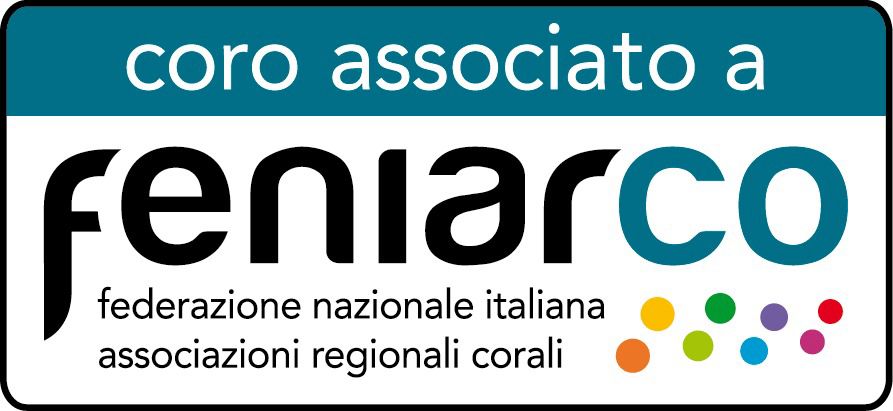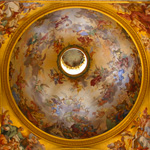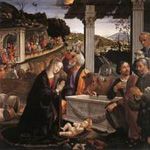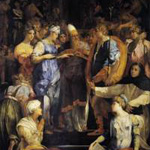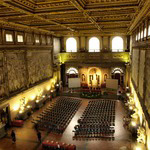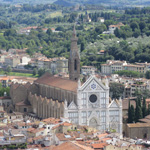 |
|||
| click here for the photogallery | |||
Excluded from the Roman circle, the site where Piazza del Duomo is now, was
originally on the north side of the primitive city plant. With the foundation of the
baptistery in the early Christian era, the religious center of the city gradually moved
further north and was incorporated into the second circle of walls. The excavations
of 1971-1972 in the area between the cathedral and the baptistery were part of
the Roman walls of Florentia. In 430 the remains of St. Zanobi, the first city bishop,
were transferred to Santa Reparata, the small church that overlooked the square,
to seal the achieved citizen primacy as the religious center. The square was much
smaller than today, with the bishop's palace next to the baptistery. All around the
buildings, divided by a labyrinth of alleys, filled the surface.
At the end of the thirteenth century, with the construction of the new cathedral,
many houses were demolished to make room for the Duomo and the bell tower.
Among the first demolitions to widen the Piazza, a part of the old church was
almost immediately destroyed to give air to the baptistery, which became the
main religious building of the city. At that time the outline was still regularized
and the square surrounding the Duomo partially enlarged. In 1955 "Operazione
Strade", consisting of the reconstruction of the road surface in the center, which
had begun to deteriorate due to the increase in private traffic and bus passages,
led to the elimination of the tracks of the Florence tram network, in piazza del
Duomo this network had one of the most important terminus of urban and extraurban
tramways to neighboring towns. From 25 October 2009 the square was
completely pedestrian.



